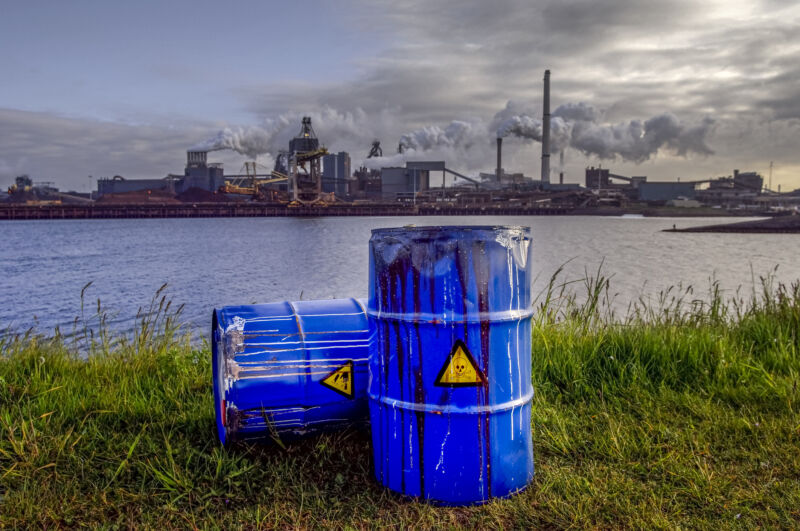

Waste from thousands of old industrial sites may be released by floods
source link: https://arstechnica.com/science/2022/07/sea-level-rise-may-flood-toxins-out-of-abandoned-industrial-sites/
Go to the source link to view the article. You can view the picture content, updated content and better typesetting reading experience. If the link is broken, please click the button below to view the snapshot at that time.
Swept away —
Waste from thousands of old industrial sites may be released by floods
During a flood, old pollution is more likely to impact low-income communities.
Doug Johnson - 7/7/2022, 3:05 PM

As sea levels rise, coastal areas face a growing risk of flooding. But humans and environments near urban centers and the ocean may face issues beyond rising water. These areas have also been home to a large number of manufacturing facilities.
Over the years, many of them may have left toxic chemicals in the soil. And now, those areas are also being threatened by floods. When it rains too hard or the sea rises too much, people nearby can expect to be exposed to a wide variety of leftover material and chemicals, some of which aren’t meant to be ingested or touched by humans.
How big is the risk? Many of our largest cities lie near the sea. By some counts, in 2020, around 400 million people lived within 20 meters of sea level and within 20 kilometers of a coastline.
New research has used historical data coupled with sea level rise projections to dive into how this issue may affect the United States. It finds that as the climate warms and floods become more common, more people will likely be exposed to industrial pollution from the manufacturing sites. Urban areas and marginalized groups within them may be particularly at risk.
“We have all these sites; we know where they’re at,” Thomas Marlow, the research’s lead author and a postdoctoral researcher at New York University’s Abu Dhabi campus, located in the United Arab Emirates, told Ars. “What are some of the climate risks they are facing, including from extreme weather events, rainfall—that type of thing—or sea level rise?”
AdvertisementSites unseen
Former industrial facilities run the gamut in terms of size and function. Some operations were particularly large, while others had only a handful of employees. The research explicitly looks at sites that are no longer functioning and focuses on those that are likely to have used some kind of hazardous industrial materials in their operations. They were all operating at some point after 1950 but had shut down by the end of 2016.
Former tenants of the sites include producers of plastics, rubber, textiles, automobiles, and metals, among others. In Providence, Rhode Island, one of the cities studied, the data also includes small-scale jewelry makers, as the city used to sport a large number of them, Marlow said. Jewelry makers end up using various heavy metals and polyvinyl chloride—which may be a carcinogen—among other compounds.
(Marlow noted that the paper didn’t try to identify any chemicals as being particularly bad. He added that the research doesn’t explicitly confirm that hazardous chemicals currently exist at any site identified—just that the industries at the sites tended to use them.)
Flooding is becoming more common in the US thanks to the world’s changing climate. When, for instance, the site of a former textile manufacturer or plastic factory floods, the leftover chemicals can make their way into the water supply, get swept into nearby homes (if they’re flooding as well), or contaminate a wider environment. As such, the residents of a neighboring duplex, for instance, may end up touching or consuming the chemicals without their knowledge.
Recommend
About Joyk
Aggregate valuable and interesting links.
Joyk means Joy of geeK